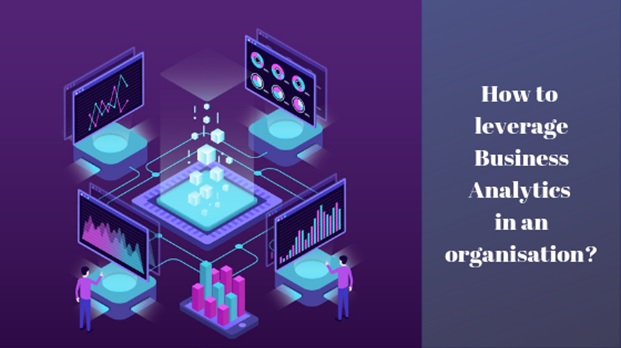
The goal is to turn data into information, and information into insight.
Data Analytics assists an organisation to tackle the data and utilize it to find new opportunities. These leads will increase business profits, enable efficient operations and ensure happy customers. Data Analytics helps an organisation anticipate needs and pain points of the customers and helps a business achieve various goals.
Why does a company require data and analytics strategy?
Data Analytics has become the key to competitive advantage. It helps leverage data, apply key analytics and execute new technologies. In fact, according to the International Institute for Analytics, by 2020, organisations using data will see $430 billion in productivity benefits over competitors who are not using data.
What is Business Analytics?
Business Analytics is all about processing Big Data to create new products, services and experiences.

Netflix is an example of a big brand that uses big data analytics for targeted advertising. The company collects data from its over 100 million subscribers and sends suggestions based on past searches and the watch-data. This data is used to give them insights on what would interest the subscriber the most.
In order to outperform the competition, many industries use data-driven strategies to innovate, capture and compete in the market. Integrating physical and digital shopping spheres involves the collection of data from every source possible, including second-party and third-party data from partners
What are the techniques to optimise business analytics in an organisation?
Leading companies have amassed data over the past several years. However, not everyone is making complete sense of this data. Naturally, there’s a dire need to look for ways that can interpret this data and facilitate business growth and development.
With our experience and expertise, we have found four techniques that are generic and effective at the same time. These include -
● Defining the Business Use Case
● Understanding Big Data and Analytics
● Optimising Current Tech-based Investments
● Processing of Real-time Data
Today, businesses are seriously concerned about their ROI and putting this technique into practice would yield better ROI for businesses. The secret here is to understand what the business wants by asking the right questions and providing accurate answers to those questions.
Why would the processing of real-time data have a positive impact on your Business Analytics?
With speed, security and cost-effective services in demand and resources in short supply, the United States Postal Service chose to cater to the progressively tech-savvy customers by adopting advanced techniques. The effect was instantaneous. These advancements have helped increase operational efficiencies, supported data-driven decision making, lowered costs, and bolstered mail security.
The process to modernise the enterprise included replacing its traditional computing infrastructure with revolutionary high-performance computing (HPC) solutions. The big data solution is helping the USPS channel the power of massively distributed graphics processing units (GPUs) to track the location of employees and individual pieces of mail in real-time.
How it helped: The data visualizations enabled businesses to support larger and more complex data workloads and quickly process, store, and enact on the information in order to make critical decisions based on live data. The goal of enhanced safety, efficiency, and services have been achieved without overspending.

Case Study: Low-cost High-efficiency Solution
Here is an excellent example of how Woolworths has been able to use the latest technology tools available to bring together siloed data within a span of 4 months with the help of TCS and Google.
Founded in 1924, Woolworths kept up with the next-gen with Big Data. What they were in dire need of was a platform to unlock years and years of collected data. The IT and business intelligence general manager Angelo Clayton realised that this data was their asset. “The data sat in so many business units across the organisation. It was so siloed, and it was just impossible to bring it all together in a trusted, reliable fashion.”
Keeping cost and efficiency as their priority, Woolworths turned to Google Cloud Platform through partner Tata Consultancy Service (TCS) to future-proof the stacks of data. Data processing that took close to an hour on the on-prem platform took 2.3 seconds on Google’s Platform.
How it helped: Going forward into 2019, Clayton said he hoped to use the company’s reinvigorated data analytics system to localise the range of products carried by its stores, offer personalised promotions and prices to consumers and optimise its value chain
Data Analytics is performed by numerous individuals and companies across the globe. If this space is so crowded, then how do you create a mark for your company? The answer is quite simple - follow the aforementioned techniques to see a difference and keep continually looking for ways to optimise these techniques.
The importance of a certified Business Analyst in the organisation
When analyzing your data, you need to be careful with statistics as they can both help and hinder you. What every organisation requires is a certified expert who is proficient with the analytic tools, removes noise and isolates what matters to the organisation. The resource needs to be both talented and disciplined to pinpoint critical insights that can yield value.
